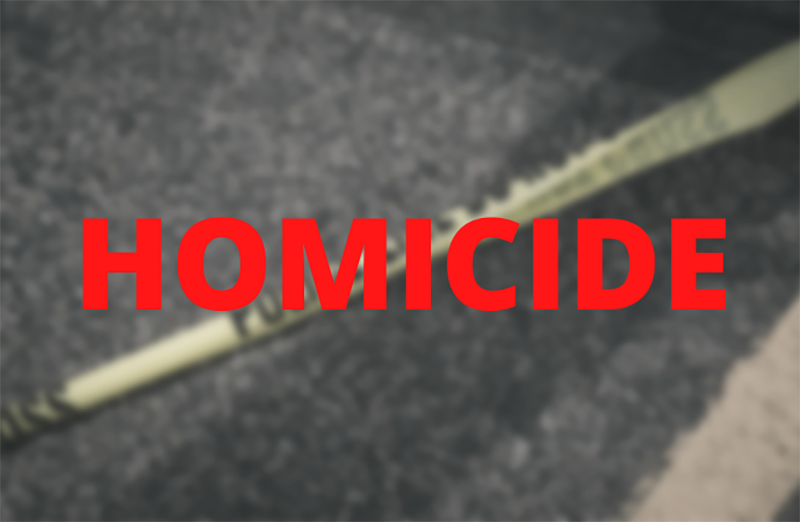
Thank you for reading D.C. Witness. Help us continue our mission into 2024.
Donate NowBy
Ayda Atici [former]
, Ashley Fajardo Perez [former] - January 30, 2024
Daily Stories
|
Homicides
|
Shooting
|
Suspects
|
Victims
|
On Jan. 30, parties delivered closing statements before DC Superior Court Judge Marisa Demeo in a multi-week homicide trial.
Vorreze Thomas, 25, and his uncle Delonta Stevenson, 28, are charged with conspiracy, first-degree murder while armed, and two counts of assault with intent to kill, among other charges, for their alleged involvement in the fatal shooting of 32-year-old Terrance Allen. The incident occurred on Jan. 18, 2021, on the 3000 block of Stanton Road, SE, and left two other individuals suffering from gunshot wounds.
All three victims were found inside a vehicle at the scene.
The prosecution began their closing statements by presenting a timeline of the events on the day of the crime.
The prosecution alleged that at 10:25 a. m., the car, occupied by the victims, was parked outside the home of one of the surviving victim’s mothers while someone in the neighborhood had then alerted Stevenson and Thomas to the victim’s arrival.
The prosecution presented the jury with voice messages and texts to corroborate this, as well as security footage of Thomas allegedly receiving a call inside of a Shell gas station.
Next, the prosecution alleged that Thomas drove his green Volvo to the neighborhood, while Stevenson walked there.
Security camera footage was used to corroborate these statements.
Then, prosecution showed footage of two individuals in front of the apartment complex pulling firearms out of their bags before re-entering the green Volvo when they saw a white car drive past.
The white car was driven by Allen, and had the two surviving victims as passengers.
After intercepting the white car, prosecution showed video footage of it crashing after rounds were fired from inside the green Volvo. The green Volvo was then seen driving off.
Then, as an eyewitness had testified, two individuals driving the Volvo crashed it into a parked vehicle and abandoned it, fleeing into a wooded area where the alleged murder weapon was later discovered.
Security video footage then showed two individuals walking to a bus stop and getting into a bus; the prosecution alleged that these individuals in the footage were Stevenson and Thomas.
The prosecution stated that “maybe one of these things would be a coincidence, maybe two things. But all of them feeding into each other?”
To establish a motive, the prosecution said that in November of 2020, Stevenson was shot and fell into a coma, and many of his close friends and family members blamed one of the surviving victims, who had formerly been Stevenson’s best friend, for the shooting.
The prosecution cited revenge as the motive for the shooting with disregard for other individuals present as the defendants had shot and killed Allen instead.
The prosecution highlighted that “Twenty-three minutes passed between when Stevenson found out that the victim was at the apartment and when Allen was fatally shot,” and “Twenty-three minutes were minutes he had that he could have made a different decision.”
They requested the jury find both defendants guilty of all charges.
Stevenson’s defense attorney, Elizabeth Weller, highlighted various inconsistencies with the evidence presented by the prosecution.
Weller argued that Stevenson is not the individual involved regarding the homicide or shooting and mentioned that “there is no real proof” Stevenson is the individual in any of the surveillance footage.
Weller pointed out how no witness, besides one, has identified Stevenson to be present before, during, or after the incident.
Weller then questioned the integrity of the sole witness who identified Stevenson as present at the scene of the crime.
Weller emphasized how the witness received a “sweetheart” plea deal which included cash and rent assistance, in relation to a different case, from the prosecution in exchange for providing substantial assistance–a notion later challenged by the prosecution.
Weller finished her statement by stating that the witness was “telling them what he thinks they want to hear,” referring to the prosecutions’ storyline. Afterwards, Weller reviewed and argued on the inconsistencies stemming from the DNA analysis of evidence.
Weller explained that a witness who reviewed the DNA analysis wrote that it “did not make intuitive sense” and insisted the system used to test an individual’s relationship with evidence through DNA is biased as it assumes “guilt” and “the person is a contributor.”
Weller stated “if you’re confused, you should be” and repeatedly stated “it doesn’t make sense.”
Ultimately, Weller concluded by highlighting the significance of what proof beyond a reasonable doubt means and doesn’t mean. She stated that a “reasonable doubt” is what would cause a person on the jury to “pause and think” before convicting someone of a crime.
She stated that if the jury had feelings of being “pretty sure that the defendant committed the crime” or “sure that the defendant committed the crime, but the prosecution didn’t make a good argument,” then they must find the defendant not guilty, as one must feel certain with no hesitation that the defendant is guilty in order to convict them.
Thomas’ defense attorney, Howard McEachern, is expected to present his closing statement in the next hearing.
Trial is scheduled to resume Jan. 31.
Notifications are not yet available for this specific case. Please check back later for updates. Thank you.